I'm attempting to implement heterogeneous association in my Data Model (Entity Framework 6, Code-First approach).
I have an existing structure of classes, let us call them Tree, Branch and Leaf. A Tree may have many Branch objects, and a Branch may hold many Leaf objects. The relationships between the three levels have a cascade-delete behavior (delete a branch and you also delete the leaves, etc.).
Now I'm trying to let users add a comment-like object on each of those levels. I had a few problems related to data-modelling, as I want each of the 3 entity types to be able to have many comments and each comment to belong to one and only one entry. I'd also like for all comments to be in the same table. I've tried two different approaches:
Alt. 1
Implement inheritance so that the Comment (abstract) can be a TreeComment, BranchComment or LeafComment, following the Table per Hierarchy (TPH) approach (as seen, for example, here) of having an abstract class (Comment) for comments and then derive it to TreeComment, BranchComment, etc. That is achieved by coding the models like this:
public abstract class Comment
{
// ID
[DatabaseGenerated(DatabaseGeneratedOption.Identity)]
public Guid ID { get; set; }
}
public class TreeComment: Comment
{
// Foreign Keys
public Guid TreeID { get; set; }
// Navigation Properties
public virtual Tree Tree { get; set; }
}
(... BranchComment and LeafComment ...)
(... add virtual ICollection<TreeComment> to Tree, virtual ICollection<BranchComment> to Branch, etc.)
...which can be expressed with this diagram:

The problem with this approach is that the relationship between the Comment table and the other 3 doesn't have ON DELETE CASCADE or ON DELETE SET NULL set. If I try to change that to more than one table, I get a:
Introducing FOREIGN KEY constraint 'FK_Comment_Branch_BranchID' on table 'Comment' may cause cycles or multiple cascade paths. Specify ON DELETE NO ACTION or ON UPDATE NO ACTION, or modify other FOREIGN KEY constraints.
I understand that this is because SQL Server "doesn't know" that only one of the FK's in the Comment table is supposed to be used at any time.
Alt. 2
Generalize the Tree/Branch/Leaf trio into a CommentableEntity using the Table per Type (TPT) approach and connect the Comment table to that abstract one. This can be achieved by implementing inheritance in the model classes (just like I did before) and adding the annotations [Table("Tree")], [Table("Branch")] and [Table("Leaf")] to each of the subclasses to make sure we get a table for each (and not a single table like in TPH). The Model, then looks like this:

This approach has two problems:
Deleting a concrete object (e.g. a branch) will not delete the base entry in the abstract table, leaving "garbage" (abstract entities and their comments) behind.
The FK relationship between the abstract and concrete classes lacks a
cascade delete. So I can't really delete the base object. If I try to add one I get another complaint on how introducing such rule would cause cycles of multiple cascade paths.
I've also tried using DB triggers (CREATE TRIGGER ... INSTEAD OF DELETE...) on both approaches but they seem to be a big no-no as EF can't track the changes done by them.
This is frustrating and I'm sure this (comments on a tree structure) is a very typical scenario in Web development; but I can't seem to find a way to allow it. I'm looking for all advice I can get on how to effectively model these relationships (EF 6 Code First) without placing too much weight on the Business Logic layer.
EDIT:
I believe this is what user @Deepak Sharma mentioned in his comment: TPH inheritance in the node classes. If so, this also doesn't work for the same reason: cycles of multiple cascade paths.
